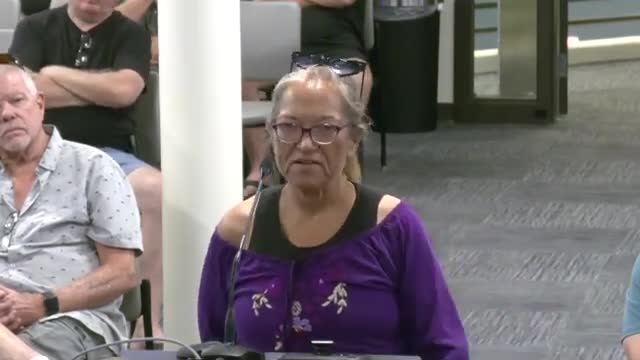Sewer system debate sparks heated community discussion
August 15, 2024 | Lake Havasu City, Mohave County, Arizona
This article was created by AI summarizing key points discussed. AI makes mistakes, so for full details and context, please refer to the video of the full meeting. Please report any errors so we can fix them. Report an error »

During a recent government meeting, officials engaged in a heated discussion regarding the implications of proposed housing developments on the local sewer system's capacity. The conversation was sparked by concerns over a potential increase in housing density, specifically the possibility of constructing up to 16 units on certain parcels of land.
One official raised doubts about the sewer system's ability to handle such density, recalling a controversial vote from 2003 that favored smaller pipes over larger ones for the sewer infrastructure. This decision has led to questions about whether the current system can adequately support future growth, especially given that it was designed with a specific capacity in mind.
Another participant clarified that while the zoning code allows for a range of units, the actual number built would depend on a mathematical calculation based on lot size and would still require a design review process. They emphasized that just because the code permits a maximum of 16 units does not guarantee that this number will be reached, particularly without a significant amount of land.
The discussion also touched on the recent updates to the sewer infrastructure, which were made to accommodate anticipated growth in Lake Havasu City. However, the exact capacity for future population growth remains unclear, as one official admitted they did not have specific figures available during the meeting.
Overall, the dialogue highlighted ongoing concerns about infrastructure readiness in the face of potential residential expansion, underscoring the need for careful planning and consideration of existing resources.
One official raised doubts about the sewer system's ability to handle such density, recalling a controversial vote from 2003 that favored smaller pipes over larger ones for the sewer infrastructure. This decision has led to questions about whether the current system can adequately support future growth, especially given that it was designed with a specific capacity in mind.
Another participant clarified that while the zoning code allows for a range of units, the actual number built would depend on a mathematical calculation based on lot size and would still require a design review process. They emphasized that just because the code permits a maximum of 16 units does not guarantee that this number will be reached, particularly without a significant amount of land.
The discussion also touched on the recent updates to the sewer infrastructure, which were made to accommodate anticipated growth in Lake Havasu City. However, the exact capacity for future population growth remains unclear, as one official admitted they did not have specific figures available during the meeting.
Overall, the dialogue highlighted ongoing concerns about infrastructure readiness in the face of potential residential expansion, underscoring the need for careful planning and consideration of existing resources.
View full meeting
This article is based on a recent meeting—watch the full video and explore the complete transcript for deeper insights into the discussion.
View full meeting
